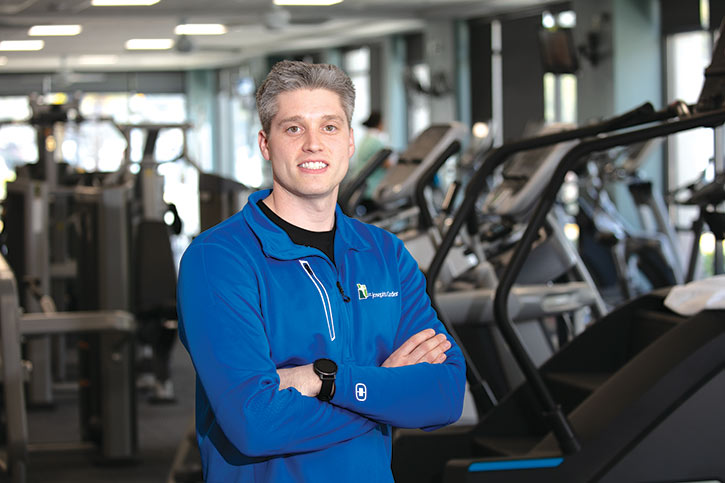
What is visceral belly fat?
St. Joseph's/Candler health educator explains the best way to lose this type of abdominal fat

The advertising promises sound so good: “Flat stomach in 14 days!” “Lose belly fat in 10 days!”
Even if it were healthy and sustainable to lose weight that fast (it’s not), the simple fact is that belly fat can’t be targeted through exercise.
“Your body chooses where it’s going to take the fat from first, as well as where it’s going to store it,” explains Anthony Weakland, ACSM-CEP, a Health Educator in the Wellness Center at St. Joseph’s/Candler.
The type of fat you are accumulating matters too. Exercises like sit-ups can tighten your abdominal muscles, but it won’t get at what is called visceral fat. This fat is wrapped around your internal organs in the abdomen. The fat right under your skin, the kind you can pinch, is called subcutaneous fat. When it comes to more serious health problems such as high blood pressure and insulin resistance, the culprit is visceral fat.
“Exercise alone isn’t enough,” Weakland says. “Nutrition is a huge factor. Good sleep and stress management are components as well in controlling visceral fat.”
Continue reading belowTaking it one step at a time
Weakland encourages his clients to take baby steps on their journey—small changes that are sustainable.
“You don’t have to stop yourself from eating potato chips ever again, for example, but you could cut out that extra serving,” he says. “And at the same time, maybe add a little distance or speed to a daily walk.”
Watching your intake of processed food such as frozen pizza and extra-sugary items such as soda can help you decrease your risk of accumulating visceral fat. Weakland also suggests that instead of grinding through an aerobic activity that you feel forced to do, try to find something you enjoy.
“If you don’t like running, do something else,” he says. “Swimming, bicycling, or even just walking—there are so many avenues to stay active.”
Strength training should also be part of the equation.
“Lifting weights improves your metabolism and can help us deal with the loss of muscle mass that comes with age,” Weakland says.
Looking at the bigger picture rather than honing in on your belly will, somewhat ironically, be the healthiest way to lose belly fat.
“Everybody’s story is a little different, but there are certain factors we all share,” Weakland says. “Exercise is very important, but you can’t forget about getting a good night’s sleep, managing your stress and eating right. Small, positive changes in each area, when they are put together, can help you feel better overall. Then staying healthy doesn’t feel like work.”
Smart Health, Smart Living - The Latest Delivered to You
Want more health stories on topics that impact the health and wellbeing of you and your family? Learn about new technology, treatment options and how you can live a smarter, healthier life in our Smart Living publication.

